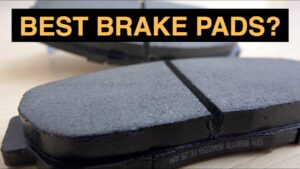One of the most undesirable situations to be in with your car is having a bad or failing hydroboost. If you are not familiar with the word hydroboost, it is another term for Hydraulic Brake Booster.
The common signs of a bad hydroboost include less braking power, a brake pedal that is hard to press, and fluid leaks. This article will discuss these symptoms and more in detail so read on!
Table of Contents
What Is Hydroboost Or Hydraulic Brake Booster?
Before going into detail about the signs of a bad hydroboost, let’s briefly check what a hydroboost is.
Hydroboost or Hydraulic Brake Boosters are one of the type of brakes used on vehicles like cars and trucks. These are not as common as the conventional vacuum brake boosters, but they serve the same purpose. If you are not sure what the purpose is, hydro boosts and vacuum boost both are responsible for reducing the pedal effort thus making it easier to operate the brakes.

The main difference between vacuum boosters and hydro boosts are hydroboost uses hydraulic pressure to assist the brakes while vacuum boost uses engine vacuum. The hydraulic pressure used by hydroboosts is generated by the vehicle’s power steering pump or a dedicated hydraulic pump.
Hydraulic brake boosters work the best for diesel engine equipped vehicles as they have fewer engine vacuum generated power accessories and therefore accessible to power accessories In comparison to gasoline engines.
What Are The Signs Of A Bad Hydroboost?
Having a bad or failing hydroboost is undesirable. When your car’s hydroboost is faulty, it causes problems like difficulty using the vehicle’s brakes which is a safety concern. Here are the common signs of a bad hydroboost in your car
1. Reduced Braking Power
It can’t be surprising when I say the first sign of a bad hydroboost is reduced braking power. If your hydraulic brake booster is faulty or has any issue with the booster or if the pressure of the system is compromised, your vehicle can experience a reduced braking power. 
This sign cannot be that hard to identify. You will notice that your car takes a long time to stop or slow down than usual when the brakes are applied. Issues like this can also be caused due to other issues in the vehicle’s brake system as well so it’s best to get your car diagnosed to find the issue.
2. Hard To Press The Brake Pedal
Another common symptom of a bad or faulty hydroboost is the difficulty in pressing the brake pedal. The main function of the hydraulic brake booster is to provide us with the ease to press the brake pedal. So it is only common that the difficulty to press the brake pedal is one of the signs of a bad hydroboost.

A hard to press brake pedal is a safety hazard as you may not be able to press the brake effectively when needed. You may need to take more effort to depress the brake which can also result in reduced braking power and increased pedal effort.
3. Fluid Leaks
Fluid Leaks are another sign of a bad hydroboost. If any part of the hydraulic brake system wears out or ruptures, it may leak fluid. The leaks may either produce drips or puddles of hydraulic fluid beneath the vehicle depending on the severity of the leak. Fluid leaks should never be ignored. Any leak in the hydroboost should be addressed as quickly as possible. Otherwise, the fluid level drops compromising the operation of the system.

How To Diagnose My Hydroboost?
If you need to be sure of what the issue is with your hydroboost, doing a few tests can help you conclude. There is the Hydroboost Function Test and the Hydroboost Accumulator Test that you can do to diagnose the issue in your hydroboost.

1. Hydroboost Function Test
For this test, apply the brake pedal five or more times with medium force while the engine is off. This is to discharge the accumulator. You will noticeably feel the pedal hardening. Apply the brake with medium force now and slowly start the engine. If the Hydroboost is fine, the pedal will drop to the floor. So you can move to the accumulator test if your booster passes this one.

If you find no change in the position of the brake pedal or feel, then the booster may not be working. You can check the power steering system to find if the problem is with the pump or the booster.
2. Hydroboost Accumulator Test
A high-pressure accumulator is used in a hydroboost system to store power steering fluid under pressure in the event of a failure. To test the ability of this accumulator, start the engine of your car and allow it to idle. Turn the steering wheel from one lock to the next to charge the accumulator. Do not hold the steering wheel in one lock for more than five seconds. Now switch off the engine, release the steering wheel and apply the brake pedal repeatedly with medium force. If the accumulator can hold a charge, the hydroboost unit will provide several applications including, hydroboost I units will provide two or three and hydroboost II units will provide one or two.
You have to hear a slight hissing like sound when the accumulator charges on a hydroboost causing the fluid to rush through the accumulator charging orifice. Now after the accumulator is charged, switch off the engine and leave the brake pedal alone for around an hour. After an hour, continuously apply brakes with medium force. Again a hydroboost I unit should provide two or three power-assisted applications, and a hydroboost II unit should provide one or two.

However, if the Hydroboost fails these tests, you can conclude that it is faulty and needs to be replaced.
Conclusion
A properly functioning hydraulic brake booster or hydroboost is important. This will enable you to operate the brakes without having to apply excessive force. This also avoids any safety hazards caused by faulty brakes. Take your vehicle to a mechanic and get it checked if you suspect that there is something wrong with the hydroboosts or anything for that matter. Hope this article helped you.


